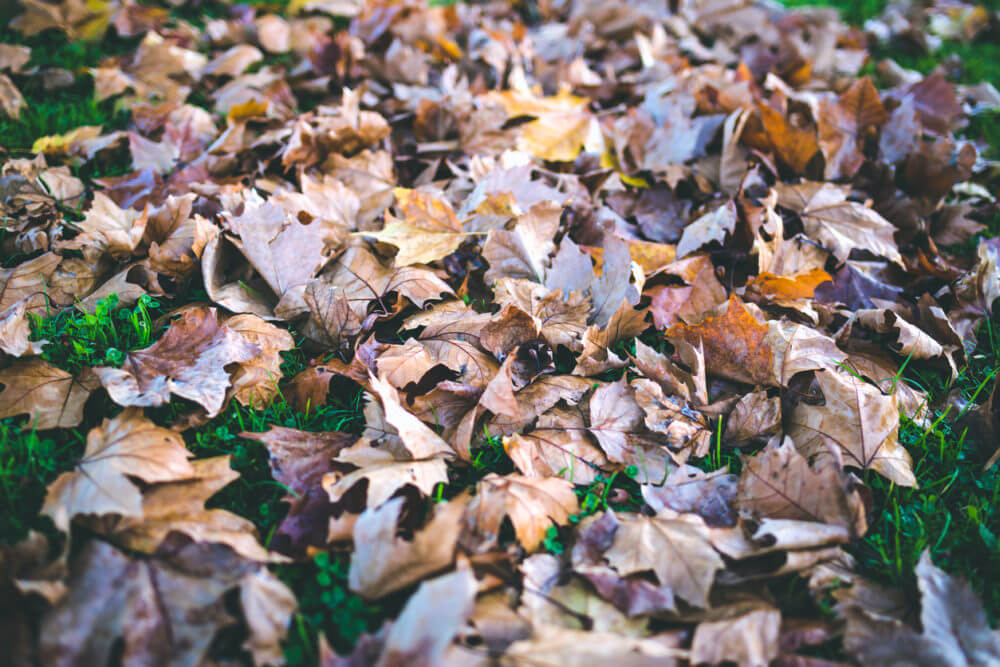Fall’s fallen leaves and pine needles can present a challenge to your lawn and can be easily overlooked as most folks retire their mowers early and are not focused on a good autumn cleanup. Even a moderate volume of leaves and pine needles left unattended for an extended length of time will likely result in lawn thinning and damage. This is especially true if debris is left over the winter until spring.
Coverage and Duration
Not only are there risks to your lawn from leaves raked into piles, but also from large areas of turf covered up by several inches of leaf and pine needle debris. While a few weeks of leaf coverage pose no real problems, several months of coverage, especially left over the winter months, can definitely undo hard-earned gains made over a growing season. Lawns surrounded by trees should receive a good fall cleanup in November after the majority of leaves are on the ground.
Damage
Extensive leaf and pine needle litter causes mold and mildew to grow under the debris leading to surface decay and loss of grass over time. Without sunlight and air circulation, grass will yellow, then brown and potentially die. Just like mulch in your home garden or flower beds, heavy leaf cover thins out a lawn if left in place – blocking sunlight and smothering the grass.
Removal
All leaves and pine needles should be removed from the lawn by late November-early December to allow the lawn to enter snowy months “clean”. In the event the leaves do remain over the winter, an early spring cleanup is critical to help minimize any damage done by missing the fall cleanup.
Mowing
The last mowing of the year should occur in mid-late November and at the lowest height of the year, generally 1.5 – 1.75” without scalping.
A low cut in conjunction with a tidy fall leaf cleanup will give your lawn the best possible opportunity to do well over a typical New England winter


